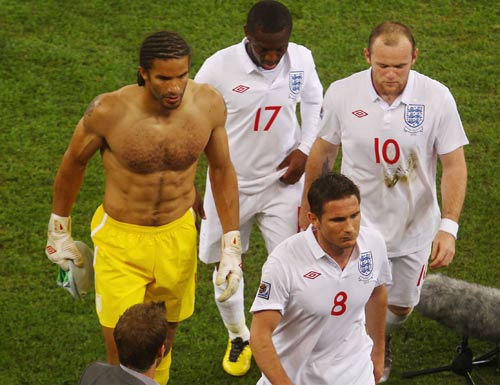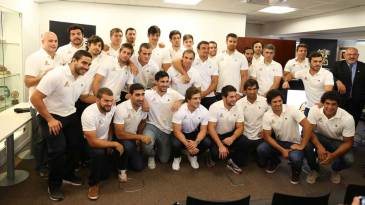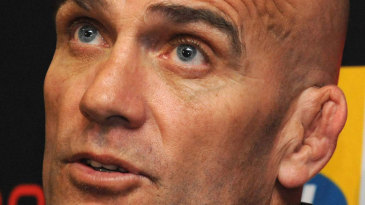
- Race:
- Spanish Grand Prix
- Drivers:
- Emerson Fittipaldi
- |
- Graham Hill
- |
- Jackie Stewart
- |
- Rolf Stommelen
- Circuits:
- Montjuïc Circuit
There is little evidence that a grand prix ever took place on the twisting hillside streets of Montjuich Park overlooking Barcelona. A monument on the old start/finish straight depicts an outline of the circuit, but it would be easy to walk through the park completely oblivious to its place in Formula One history.
In the modern era of expansive run-off areas and Tecpro barriers, it's also remarkable to think a grand prix was even considered on the tight, cresting, tree-lined streets. But for four years between 1969 and 1975 the Spanish Grand Prix alternated between Montjuich and the purpose-built Jarama circuit outside Madrid.
There was no doubt which Spanish venue was more revered and indeed feared by the drivers. As early as 1970 the governing body, FISA, was making noises that Montjuich's layout would have to be modified with chicanes to keep speeds down - the 'stadium jump' was of particular concern. For the best part of a decade the city of Barcelona resisted the alterations and in the end the governing body issued an ultimatum saying they would have to be made by 1977 in order to keep the race on the calendar.
To maintain the pressure in the meantime the FISA decreed that new guardrails and fencing should be fitted for the 1975 race and gave the organisers little more than a week to make the changes. While the alterations were undoubtedly needed, the rushed preparations meant the circuit was far from ready ahead of Friday practice.

Jackie Stewart, who was reporting for the Daily Express at the time having retired from racing two years earlier, takes up the story: "When I arrived at Barcelona the track had been approved by the organisers and was ready for practice and qualifying. Yet I personally was able to move barriers and take out the bolts holding them together with my bare hands. Some had no nuts on them. Some were so loose the nuts fell out."
The Grand Prix Drivers' Association (GPDA) swung into action and threatened to strike over the weekend if the barriers were not brought up to standard. As president of the GPDA, Denny Hulme led the negotiations and was backed up by big names such as Niki Lauda, Carlos Reutemann, Jody Scheckter and Fittipaldi. Friday morning practice was cancelled and in the afternoon the only drivers to hit the track were Jacky Ickx and Vittorio Brambilla, neither of whom were members of the GPDA.
But the drivers' picket line was well and truly drawn and the organisers worked through the night to bring the barriers up to standard. On Saturday morning the teams sent their own mechanics out to ensure every bolt was sufficiently tightened and hurry up the work. At noon the GPDA inspected the circuit and held a vote on whether to race - only six members felt it was safe.

Fittipladi was the only driver to keep up the protest, completing three mandatory laps in order to fulfil McLaren's contractual obligation but making sure none of them were quick enough to qualify. "I don't want to race because I do not believe the track will be made safe for the grand prix," he said after the session.
By the end of qualifying the Ferraris of Clay Regazzoni and Lauda had locked out the front row of the grid, with James Hunt and Mario Andretti lining up in third and fourth. There was still a sense of unease among many of the drivers, but when the lights went out on Sunday afternoon 25 cars gave it hell for leather in the sprint down to the first corner.
The crash barriers were given their first test less than a mile into the race as Lauda was clipped from behind and spun nose first into the right-hand side Armco, taking out team-mate Regazzoni in the process. The race was over for Lauda but both Ferrari drivers were unharmed and after a lengthily pit stop Regazzoni returned to the track.

But on lap 26 disaster struck. Moments after crossing the start/finish line Stommelen's rear wing detached ahead of the 'stadium jump'. Deprived of downforce the car slammed against the barriers, took off and was launched high in to the air as it clipped the top of the Armco on the opposite side of the track - coincidently the same section the Embassy Hill mechanics had tightened the day before. It tore through the safety netting, took out a lamp-post and landed upside down in a spectator area, crushing a fireman to death and killing four others. Stommelen miraculously survived with two broken legs and several cracked ribs.
Ten minutes and four laps passed before the provincial governor finally gave the order to stop the race and allow the emergency services access to the scene. Eye-witnesses said police used truncheons to stop people helping Stommelen, and the marshals left the German driver trapped in his car when the on-board fire extinguisher went off. Team boss Graham Hill and Wilson Fittipaldi decided to take matters into their own hands, running from the pits to rescue the driver, who was trapped in the mangled wreck.

Pace, who had seen Stommelen's car fly over his during the accident, added: "The race should not have been allowed to start. You cannot play around with human lives like this."
In truth it had been a tragic accident caused by a malfunctioning wing on a dangerous section of track. Blame could not and should not have been apportioned to any of the people involved. Team owner Hill, who had witnessed so much tragedy over the course of his career, was a calm voice of reason.
"It could have been much worse," he said. "The safety barriers held up and the debris netting slowed the car down and stopped it from going further into the spectator area. In England you buy a ticket and it warns you that motor racing is dangerous and that you attend at your own risk."
As less than 66% of the race distance had been completed, the top six were only given half points for their efforts with Jochen Mass taking victory for McLaren. Among the points scorers was Lella Lombardi, who became the first, and so far only, woman to score a world championship point (albeit half a point) in Formula One for finishing sixth.
It came as little surprise when Montjuich Park's contract was not renewed to host the 1977 Spanish Grand Prix, bringing an end to the circuit's brief and dramatic existence in Formula One.
Laurence Edmondson is an assistant editor on ESPNF1
© ESPN Sports Media Ltd.
 Laurence Edmondson is deputy editor of ESPNF1 Laurence Edmondson grew up on a Sunday afternoon diet of Ayrton Senna and Nigel Mansell and first stepped in the paddock as a Bridgestone competition finalist in 2005. He worked for ITV-F1 after graduating from university and has been ESPNF1's deputy editor since 2010
Laurence Edmondson is deputy editor of ESPNF1 Laurence Edmondson grew up on a Sunday afternoon diet of Ayrton Senna and Nigel Mansell and first stepped in the paddock as a Bridgestone competition finalist in 2005. He worked for ITV-F1 after graduating from university and has been ESPNF1's deputy editor since 2010

